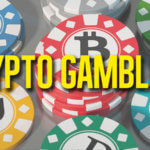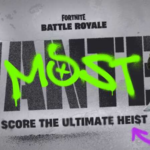Published on: 24/10/2022
Pawsome — 3D metaverse game launches on Qi Blockchain
Pawsome 3D, a dog racing and breeding NFT game, has been launched on the Qi Blockchain this month. Pawsome is a game where users breed dog NFTs to compete against friends or other players in online races for QIE cryptocurrency.
Pawsome allows users to mint 10,000 unique first-generation dogs on the blockchain with QIE. They can buy and sell these dogs on Hovr NFT Marketplace after the dogs have been minted on Pawsome.
Pawsome claims to be an advanced version of Cryptokitties. It launched on the Qi Blockchain because it warranties success and long-term sustainability as it has been designed to scale with the game. Ethereum, for example, could not handle Cryptokitties’ high-volume transactions. Qi also allows decentralized ownership of the NFTs, ensures transparency, and minimizes the risk of fraud.
Because it is built on Qi Blockchain, Pawsome charges 100 times lower transaction fees than Cryptokitties.
Pawsome’s features, how to play
The game’s main attraction is dogs, animals that are beloved by many people in real life. In the game, their primary purpose is to participate in metaverse races. Their value is determined by their generation number and how they are minted.
Every single one of the dog NFTs is minted at random, and each comes with unique attributes. Users may either get one that is suitable for racing or one that prefers to lie around. They can’t be duplicated but can be bred, which is one of the game’s key features.
Breeding 10,000 unique Generation 0 dogs allows users to create new ones using an advanced algorithm and get dogs with the best DNA for racing. Users are encouraged to buy the best dog and collect as many dogs as possible and breed the perfect DNA from them. The best quality dogs for racing can be traded on the market for profit.
NFT potential in gaming
During an interview with Cointelegraph, Animoca Brands co-founder Yat Siu compared NFT gaming’s potential to mobile phone gaming, which initially started with a certain niche in the formative stages before eventually becoming the most popular gaming method in the world.
“Mobile gaming brought a form factor of a type of game that we’ve never seen before, you know, one-hand play and that kind of stuff, and innovations around how you play with AI [artificial intelligence]. Because of the fact that you have this limited form factor, it became the most popular form factor in gaming,” Siu said.
While many blockchain games are currently at clunky formative stages since the sector is relatively new, Siu said the industry would eventually develop more advanced models, designed with digital ownership, interoperability and economic utility for the users. He also said metaverse gaming platforms and multiplayer online game models would fit well with NFTs.
“I mean, when you think of this [blockchain games], you could say it’s a UX [user experience] nightmare. But, because of ownership, people put up with it not just because it’s valuable, but because it’s meaningful because this is my land, this is my car,” Siu said.
He insisted that NFT integration would eventually become a commonly used service and change people’s way of interacting in the future.
-
Gaming // 2022-10-24
Catheon Gaming launches Catheon Storefront NFT Market



